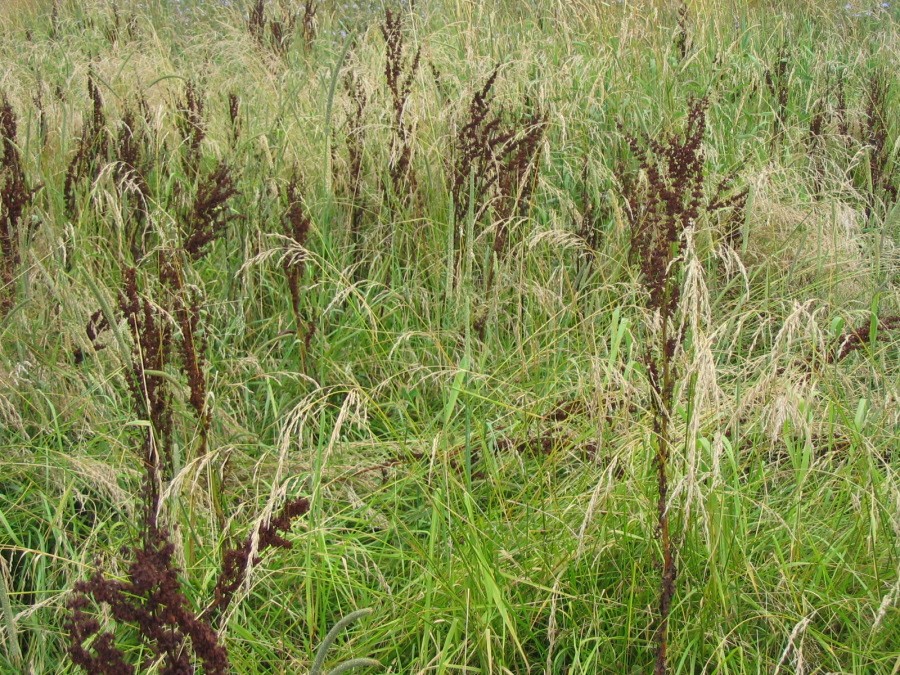Pasture plant cover and seed bank composition on a Maryland farm after
fallowing
Dr. Sarah Goslee, USDA ARS Pasture Systems and Watershed Management
Research
Unit
Background¶
Pasture fallowing is the practice of leaving pastures ungrazed for a period to encourage grass reseeding and increase pasture diversity. This practice has been studied in New Zealand, where it is an effective management tool. Fallowing has been used by producers in the northeastern United States, but has not been well-studied in this region. The absence of mowing or grazing may increase grass seed production, but could also decrease legume populations or increase weed abundance. We looked at the effects of fallowing on pasture plants and on the seed bank on a farm in Maryland.
Study Site¶
The farm studied was in northern Maryland. It has been a grazing dairy since 1996, when pasture areas were seeded with endophyte-free tall fescue, white clover, perennial ryegrass and chicory. The farm was certified organic in 2005.
In 2001, fallowing of selected areas was begun. The producer’s goal was to fallow each paddock on a seven-year rotation. Fallowed fields are left ungrazed from early spring until late July, after seed set, when heifers are brought in to graze down the standing plants.

Sampling Methods¶
The vegetation was surveyed in 32 paddocks in the spring, summer and autumn from 2004 to 2006. Canopy cover of each species was estimated in ten 0.25-m2 quadrats arranged in a zig-zag pattern in each paddock.
To measure the seed bank, we took twenty soil cores along the same zig-zag pattern. Soil cores were taken spring and autumn from 23 paddocks. The cores were spread over seedless soil-filled trays in the greenhouse and all seedlings were identified and counted.
Results¶
Tall fescue, orchardgrass, white clover and Kentucky bluegrass were the most abundant species by cover (79 species found). Common plantain, smooth crabgrass, Kentucky bluegrass and white clover were the top species in the seed bank (65 species found). We compared never-fallowed paddocks (the dashed lines, repeated with each treatment for reference) to currently-fallow paddocks, or to those one, two or many years after fallowing.
The only significant differences in total cover were during the fallow period and subsequent graze-off. Tall fescue cover did not respond to fallowing. Legumes decreased, but recovered by the summer of the first year after fallowing. Thistles increased in abundance in fallowed paddocks, but returned to base levels by the second year. By the end of the second year post-fallow, there were no differences between the fallowed and never-fallowed paddocks.
The total number of seeds in the seed bank increased greatly in the autumn of the fallow year and following spring (left scale). This increase did not last into the second year. Tall fescue seed numbers increased in the autumn of the fallow year, but did not persist in the seed bank (right scale). Neither the numbers of legume seeds nor thistle seeds changed in response to fallowing (right scale). No change in soil seed bank numbers lasted longer than two years.
On this farm, no long-term beneficial changes in the seed bank or pasture vegetation after fallowing were observed. Tall fescue set seed and produced seedlings in the fallow paddocks, but this grass did not increase in total cover after fallowing. Allowing natural reseeding of fescue may increase levels of wild-type endophyte. The observed negative effects - decreased legume abundance and increased thistle cover - also did not persist.